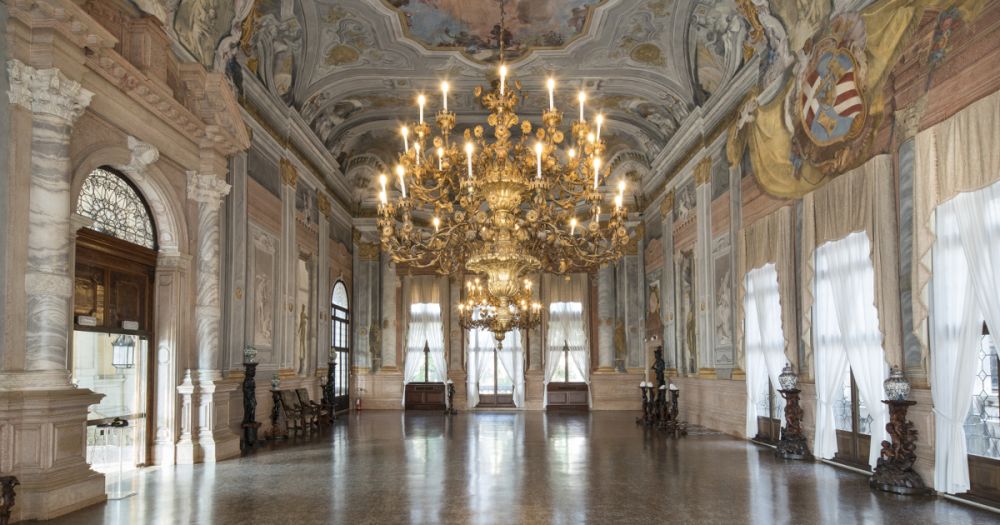

The grand palace of Ca' Rezzonico stands as a testament to the opulence and grandeur of 18th-century Venice. Built for the noble Bon family, the palace was designed by the famed architect Baldassarre Longhena in the mid-1600s and completed by Giorgio Massari in the 1750s. As one of the most notable examples of Venetian baroque architecture, Ca' Rezzonico quickly became a landmark on the Grand Canal.
Tourism at Ca' Rezzonico began to flourish in the 19th century when Venice became a key stop on the Grand Tour, the traditional trip of Europe undertaken by mainly upper-class European young men of sufficient means, as well as artists and intellectuals seeking cultural enrichment. During this time, the palace captivated travelers with its impressive facade, sumptuous interiors, and the lure of Venetian high society events.
Over the years, Ca' Rezzonico underwent numerous changes in ownership and purposes. It wasn't until the early 20th century that its role as a tourist destination was solidified. In 1936, Ca' Rezzonico was transformed into a public museum dedicated to 18th-century Venice. With its period rooms embellished with original furnishings, artworks by Venetian masters, and the grand ballroom, the palace allowed visitors to step back into the splendor of the Venetian golden age, thus becoming a pivotal attraction.
Today, Ca' Rezzonico is an integral part of Venice's tourism industry. Modern visitors are enchanted by its carefully curated exhibitions and the immersive experience it offers. Featuring a rich collection of Venetian art, including masterpieces by the likes of Tiepolo, visitors are granted a narrative that weaves through the cultural and artistic history of the city.
Visitor Experience: As tourism has evolved, Ca' Rezzonico has embraced interactive experiences such as guided tours, educational workshops, and multimedia presentations, enhancing the visitor engagement and understanding of the historical context.
Sustainability Trend: In the latest tourism trend, there is a growing emphasis on sustainability and preservation. Venice itself faces challenges such as rising water levels and overtourism which pose a threat to its heritage sites, including Ca' Rezzonico. Current tourism initiatives focus on balancing visitor numbers with conservation efforts, promoting responsible tourism that respects and maintains the integrity of Venice's prized cultural assets.
Digital Outreach: Additionally, in an age defined by digital connectivity, Ca' Rezzonico has also entered the virtual tourism space. Virtual tours and online collections offer a glimpse of its treasures to a global audience unable to visit in person, expanding its reach and educational potential.
The history of tourism at Ca' Rezzonico is a rich and evolving narrative that mirrors the broader trends in travel and cultural engagement. From its early days as a stop on the Grand Tour to its modern role as a museum, it has adapted to the changing tastes and concerns of visitors. As it stands, Ca' Rezzonico is not just a monument to the past but also a vibrant part of Venice's living history, continually redefining its relationship with the visitors who pass through its halls.